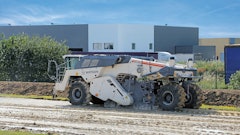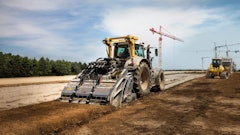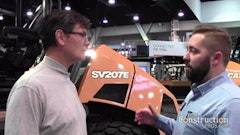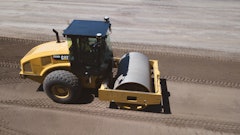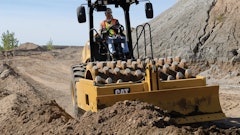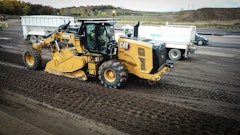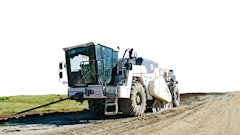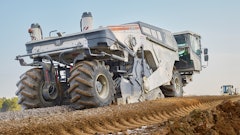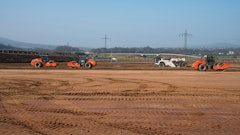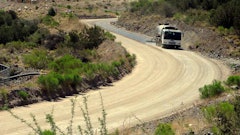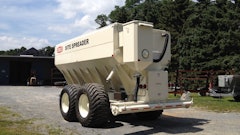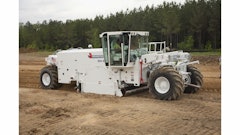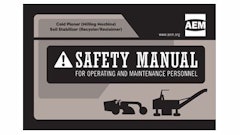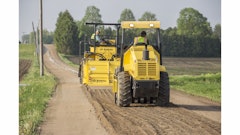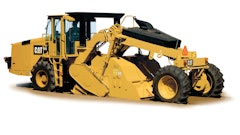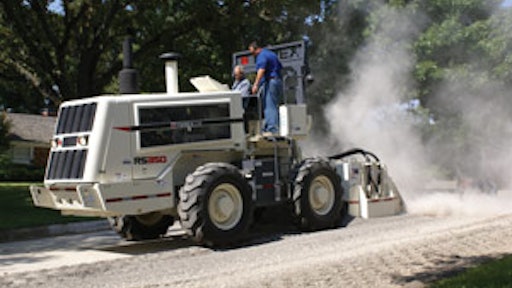
This is the second in a two-part series on the benefits of reclaimer/stabilizers. Click to read Part 1: Recycling Yields Better Roads
Much as their name implies, reclaimer/stabilizers are multipurpose machines. "There are several types of jobs you can do with a reclaimer/stabilizer," says Tim Kowalski, recycling project manager, Wirtgen America. "Not only different jobs, but [using] different additives, as well."
Valentine Resurfacing, Vancouver, WA, does a significant amount of Full Depth Reclamation (FDR) work, though it does periodically use its reclaimer/stabilizers for other applications. "We do more FDR on an average yearly basis [vs. soil stabilization] ? probably two to three times as much," says Chuck Valentine, owner. "Most of the soil stabilization is primarily in the fall and winter months, and not so much in what you would call the regular work season. When the weather is warm, we are doing a lot of our FDR work."
However, Ray Hensley Inc., Springfield, OH, uses its reclaimer/stabilizers for approximately 60% reclamation and 40% stabilization. "We do more soil stabilization in the winter months, where we are trying to modify the soil," says Greta Wilt. "And in the summer, we see more FDR."
Between the two processes, the company is able to keep its reclaimer/stabilizers plenty busy. "Sometimes my three are not enough and we have to rent another machine," says Wilt.
Growth in soil stabilization
Soil stabilization typically uses cement, lime or fly ash to increase the load bearing capacity of the soil. "This in turn helps dry out the material and give you a more constructable material to work with," Kowalski says.
Site-Prep of NC, based in Monroe, NC, actually uses its reclaimer/stabilizers for roughly 65% soil stabilization and 35% FDR. "We have different machines that we use for soil stabilization," says John Edwards. "Over the years, through job costing, we have been able to determine which machines are more adequate for certain applications and, from a cost standpoint, which ones are more profitable to run in certain applications.
"Some of the larger, higher production machines we own are predominantly for FDR work," he continues. "They are more expensive to operate. There is higher fuel consumption. The added production sometimes is not needed on a soil project. But we also use those machines on soil projects that require deeper depths utilizing lime and cement and deep stabilization."
Midstates Reclamation and Trucking, Lakeville, MN, has been involved in FDR since 1992. FDR currently represents 40% of its business. According to Tom Johnson, it has become such an accepted practice in Midstates' primary markets, he actually sees more opportunity in stabilization. "Soil stabilization is what is really going to catch on," he asserts. The company is ready, with its six reclaimer/stabilizers set up for both tasks, including teeth that can handle either application.
American Road Reclaimers, Sycamore, IL, just recently expanded into soil stabilization. "The first couple of years, we just did reclamation," says Joe Tyrrell. "Then we branched out and started doing the stabilization. The last couple of years, it has been pretty much split between FDR and soil stabilization. You have a machine that is capable of doing both."
Expansion into the stabilization market did take additional investment. "When you go into stabilization, obviously you have spreader trucks," says Tyrrell. "You have more compaction equipment and graders to finish the product. So it is more equipment and more people."
The cutting end
Whether your emphasis is in reclamation or stabilization, it's important to select the right reclaimer/stabilizer configuration for your situation and site conditions.
Tooth and drum selection are important to make sure the reclaimer/stabilizer can meet gradation specs. "There are a wide variety of teeth on the market that promise different gradations, whether you are working in thicker asphalts, thinner asphalts, more soil, less soil," says Edwards. "We have certain cutter bits that we use strictly in FDR." There are also combination bits that do both FDR and soil stabilization.
"Then you have the components within the drums, like breaker bars, that will assist the gradation. Some machines have more actual cutter bits than other machines," Edwards explains. "With the older machines that we use mostly for soil stabilization ? the prequel to the reclaimers ? they didn't have as many teeth." As technology continues to improve ? with increased drum speeds and breaker bars ? the machines are better able to achieve gradation.
Reclaimers/stabilizers also come with two types of cutter housings: fixed and variable chamber.
Terex is one of the manufacturers offering both types. "The fixed housing gives us better first-pass gradation with maximum forward speed of the machine," asserts Jim Holland, Jr., product manager, Terex Roadbuilding. The variable chamber machine is an advantage when performing soil stabilization in "gummy" soils. "The advantage of the variable chamber is that the volume changes at the top. As that material gums up, you can hold it in the top of the housing and material can pass out of there."
Power and performance
When it comes to sizing a reclaimer/stabilizer, power is everything. "Typically, when you size a machine, you need to be looking at your depth of treatment," says Holland. "Obviously, the higher horsepower machines are going to work better in the deeper asphalts. You are going to get more production, more miles per day out of a high-horsepower machine."
This has proven the case for Valentine Resurfacing. "Because we pulverize a lot of deep asphalt ? 6-in.-plus depth ? one of the primary considerations for us is horsepower to get through that thick of material," says Valentine.
As always, there is a trade-off. "Typically, when you have the higher horsepower, you are going to have more torque, more travel speed and more hydraulic horsepower to mix the material better," says Dave Dennison, product manager - soil products, BOMAG Americas. But that excess power does come at a cost. "As you go to the higher horsepower, especially nowadays, you typically require more fuel usage."
You must balance the ability to accomplish the job with the cost of operation and productivity. "The smaller machines are limited in their width and also their depth of cut," says Dennison. "Essentially, if the job has 12 in. of asphalt on it and your depth of cut is only 10 in., you will not be able to use that machine on the job."
With a larger fleet, it is worth considering several different size machines. "We are to the point now where we have enough machines that we can actually make the machine fit an application," says Johnson. "When we first started, all we could have is high-horsepower units because a machine might be doing a light job, a heavy job, a light job and a heavy job. Now, we try to schedule around [the project requirements], because I don't need an 800-hp machine to do a small parking lot when 600 hp will do it."







